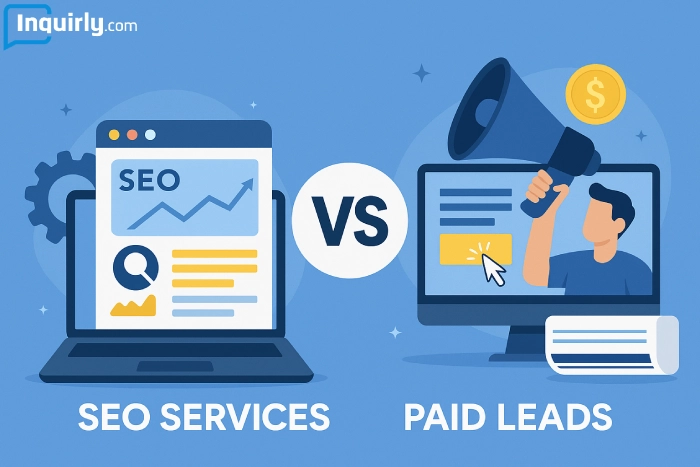In an industry where reputation is everything, HVAC businesses thrive or falter based on the quality of their work and the satisfaction of their clients. But there’s a third pillar that often gets overlooked: the power of a well-executed HVAC referral program.
Before diving into tactics and examples, it’s essential to understand the context in which these programs operate. HVAC services often involve high-ticket sales, recurring maintenance plans, and time-sensitive service calls. This combination makes trust a critical currency. People don’t just hand over a friend’s contact details unless they’re confident you’ll deliver.
While exact numbers vary, companies that run structured referral programs often see a higher customer acquisition rate, as word-of-mouth referrals close faster and cost significantly less than paid leads. However, simply asking for a referral isn’t enough. Customers need a reason to act, a structure that makes participation easy, and a follow-through that respects their trust. That’s where intentional, strategic referral marketing programs come in.
Let’s break down how HVAC companies can set up referral programs that aren’t just functional, they actually work.
The Psychology Behind a Successful Refer a Friend Program
Effective referral programs tap into basic human behaviors: reciprocity, recognition and reward. Your customers already believe in your service. A refer a friend program simply gives them a nudge to share that belief. When structured right, it doesn’t feel like marketing, it most likely feels like helping a friend.
Your program should answer a few key questions: What’s in it for the referrer? How do you recognize their effort? And how simple is the process? Consider options like dual-sided rewards (e.g. $50 off for both the referrer and the new customer), public acknowledgment or tiered incentives that increase with each successful referral.
Tip: Avoid overcomplicating the entry process. A landing page with a single form field for a friend’s contact or a shareable link tied to a customer account, can make all the difference.
How to Set Up a Referral Program for HVAC Services
Referral programs are not plug-and-play. They require active management, real-time reporting, and occasional tweaking based on what converts. Here’s how to build a customer referral program from scratch that aligns with your brand and sales model:
1. Define Your Ideal Customer
Referrals reflect those who refer. Know who you’re targeting to get higher-quality leads.
2. Choose Your Incentive
Offer meaningful rewards like cash, discounts, or service credit that match the value of a new sale.
3. Develop Tracking Systems
Use tools like ServiceTitan to ensure each referral is tracked, credited, and followed up on accurately.
4. Promote Regularly
Highlight your referral program everywhere—from invoices to email campaigns and social posts.
5. Train Your Team
Your technicians should naturally mention and explain the referral program to satisfied clients.
Choosing the Right Type of Referral Program
There are three types of referral structures commonly used in the HVAC space:
- Direct Referral: Customer sends a lead, and you pay upon conversion.
- Affiliate-style Links: Each customer has a unique link to share, which automates the referral process.
- Partnership Referrals: Local businesses or real estate agents refer clients in exchange for a fee or cross-promotion.
Each method has pros and cons. Direct referrals are personal but harder to track. Affiliate-style programs are scalable but less intimate. Partnerships can yield big wins but require strong external relationships.
To build a paid referral program responsibly, be transparent about payment terms and follow all FTC and local disclosure guidelines.
Want to expand your referral network beyond customers?
Take a look at the Networking Strategies to Grow Your HVAC Business.
Measuring Success: Metrics That Matter in Referral Marketing
Just launching a program doesn’t guarantee traction. You must analyze performance:
- 📈 Conversion Rate of Referred Leads
See how well referred prospects turn into paying customers compared to other channels. - ⏱️ Time to Conversion Compared to Other Sources
Referrals often close faster, track how long it takes these leads to convert. - 💰 Lifetime Value of Referred Customers
Referred clients are usually more loyal and valuable over time. - 👥 Average Number of Referrals per Customer
Measure how many new leads each happy customer typically brings in.
Use these insights to adjust incentive amounts, identify top referrers, and refine messaging. Over time, referral clients often become your most loyal base. According to industry research, they stay longer, spend more, and are themselves more likely to refer.
FAQ
Conclusion
A strong HVAC referral program is a revenue engine built on the foundation of trust. With the right structure, messaging, and consistency, referrals can become your most effective and profitable source of new business. Focus on clarity, simplicity, and mutual value and your customers will be more than happy to spread the word.


